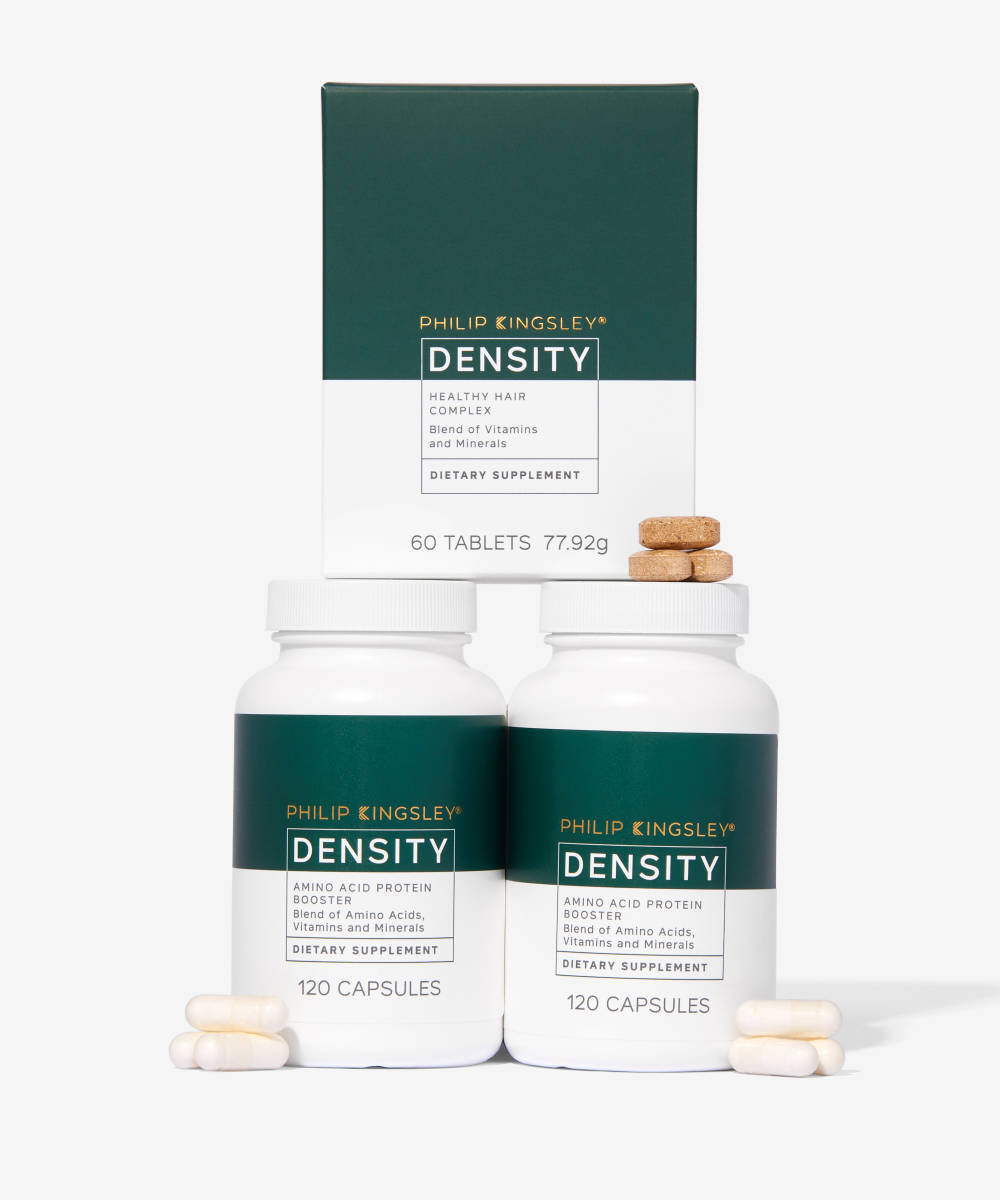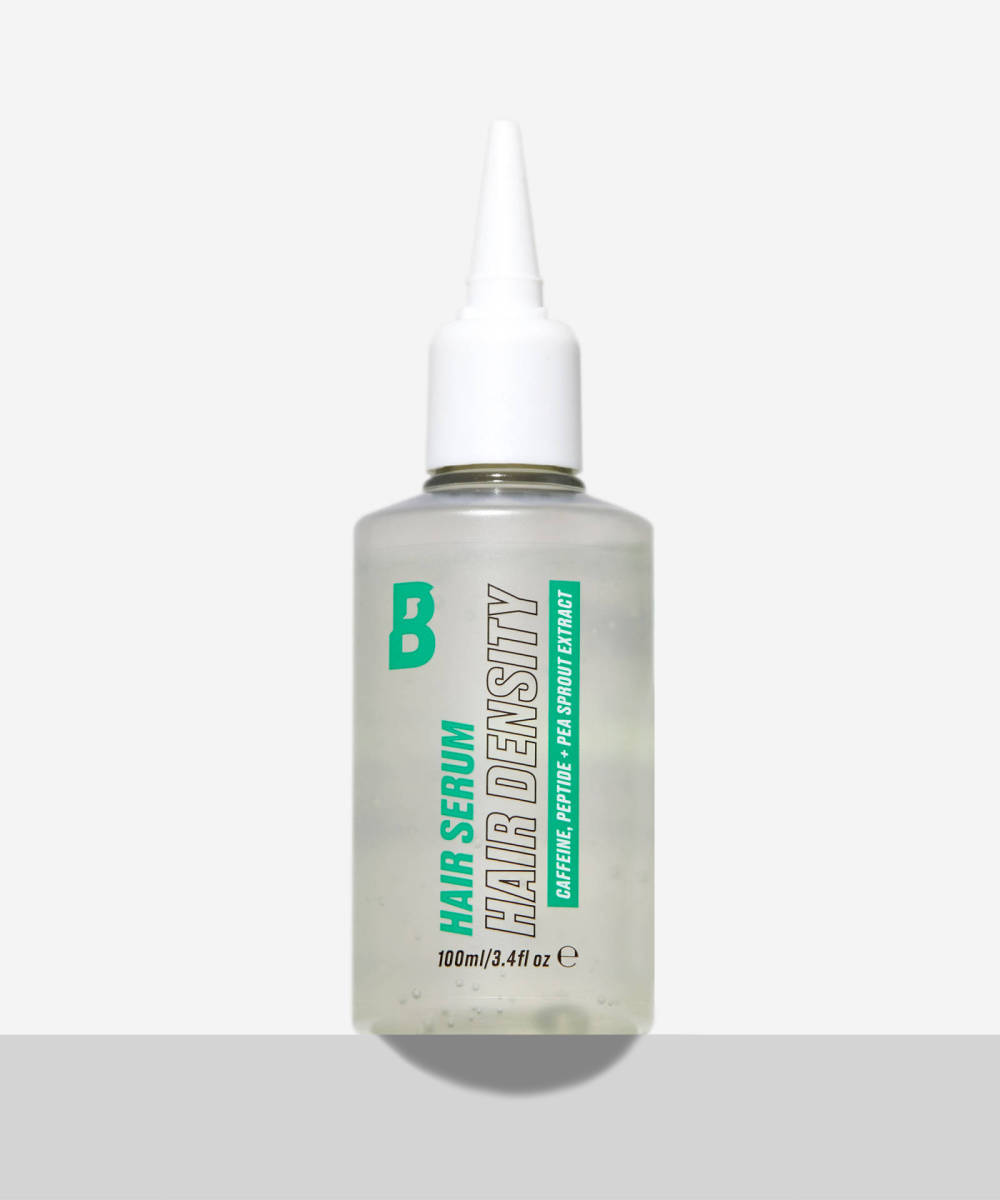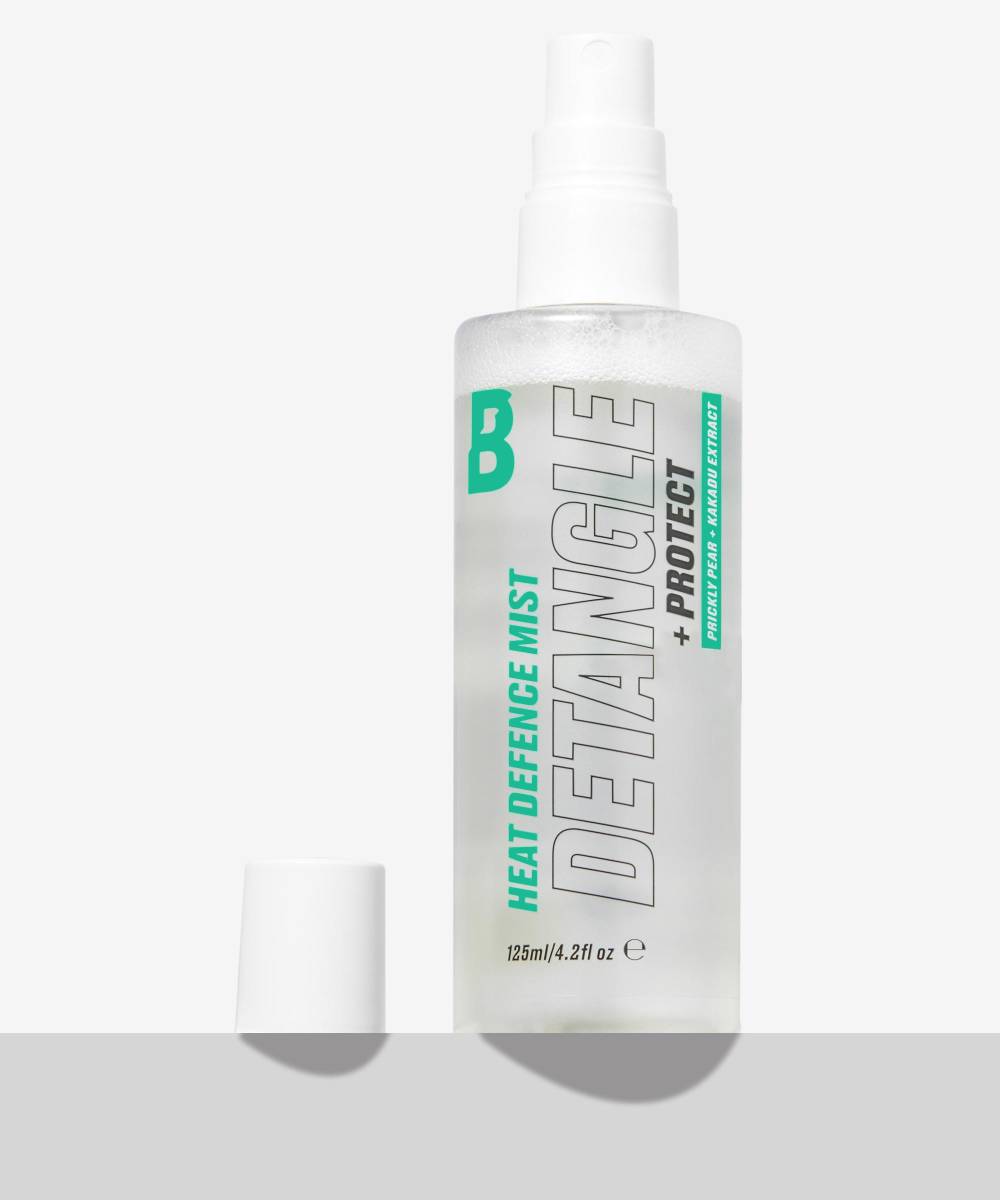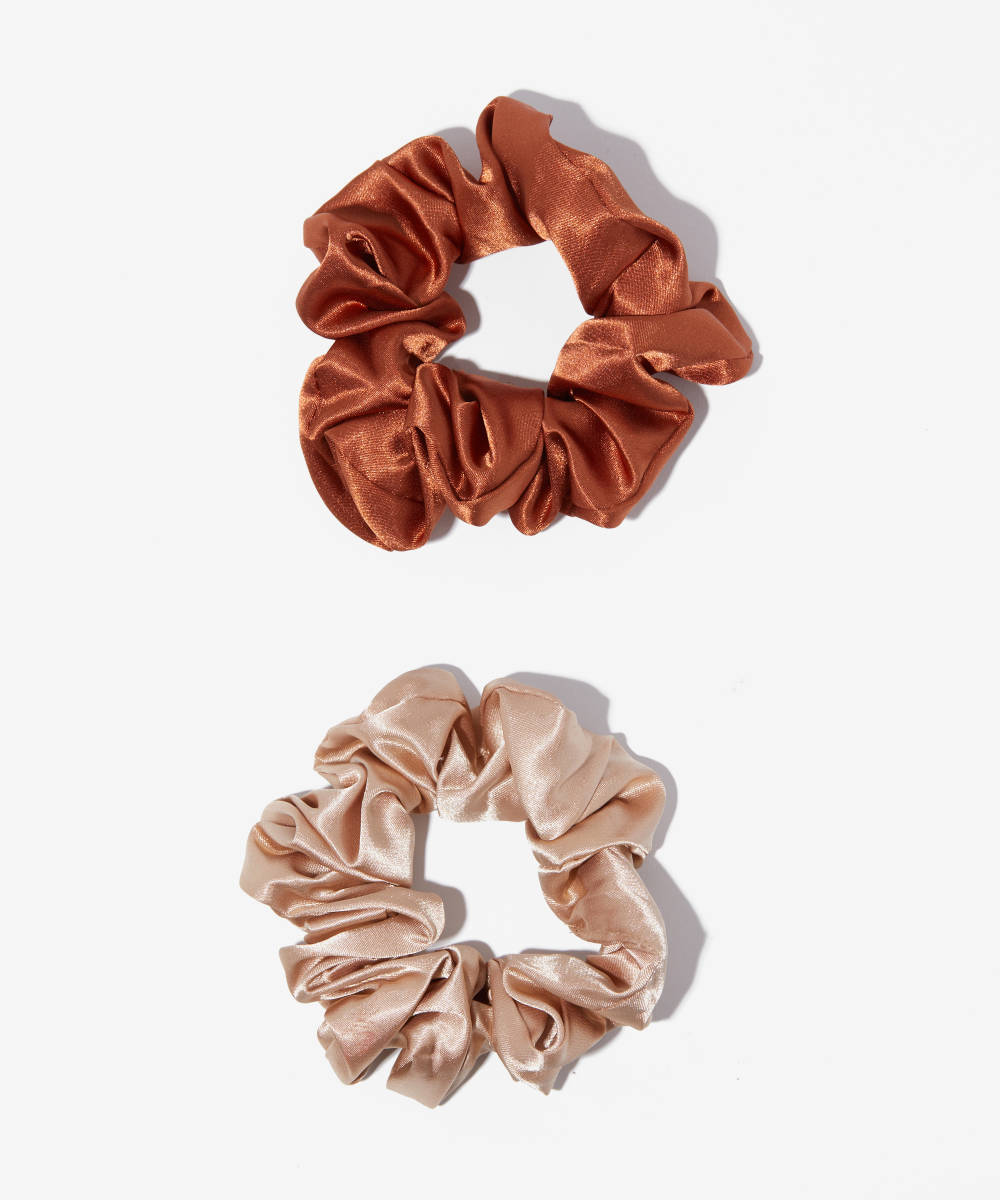If you’ve been stood in the shower, lathering up your favourite shampoo, and pulled your hand away to see it covered in loose hair, you might’ve had panicked thoughts of ‘why is my hair falling out?!’. While hair shedding happens every day, you will go through times when it becomes a lot more noticeable than usual, be that in the shower, or when you’re brushing.
If you’re experiencing more hair falling out than usual, do not worry! We’re going to explore the many reasons that can cause excessive shedding, so you can manage it. From haircare swaps to supplements and lifestyle changes – there are many ways to help stop hair shedding more than usual.
The Difference Between Hair Shedding and Hair Loss
Firstly, we want to be clear that hair shedding and hair loss are two different things. Hair shedding is natural and part of your hair’s growth cycle, old hair has to make room for new ones somehow.
Hair shedding shouldn’t usually lead to visible changes in thickness – if you are seeing significant changes to your hair density or any thinning patches, that can be a sign of hair loss. If you’re experiencing hair loss it’s best to speak to a doctor or hair loss professional to help get to the root of the cause.
The Hair Shedding Cycle
Hair shedding is completely normal, everyone experiences it – typically you can expect to lose between 30 to 150 hairs a day, which should largely be unnoticeable. The reason it’s normal is because shedding is part of the hair growth cycle. There are three phases to hair growth: The growth phase (anagen), the transitional phases (catagen), and the resting/shedding phase (telogen).
Essentially, the resting phase lasts for two-four months, and over this time old hair sheds as new hair begins to grow. No, this doesn’t mean hair shedding only happens over four months of the year though, as each hair will be in its own cycle – something we’re very grateful for as every hair shedding at the same time wouldn’t be ideal!
If you do find your hair shedding more than usual, then explore the possible causes below, so you can help get your hair shedding cycle back on track.
Why Your Hair is Falling Out: Reasons for Excessive Hair Shedding
If you understand the causes of excessive hair shedding, it can make the feeling of lots of hair coming out in the shower a bit less alarming…
Stress: It puts an emotional and physical toll on your body, it can cause sleepless nights, breakouts, and an increase in hair shedding. Stress can disrupt your hair growth cycle which will lead to excess hair fall. So, if you’ve been under a lot of stress, more hair fall than usual is to be expected.
Hormonal Changes: Like stress, hormonal spikes and dips can cause changes to our bodies in all sorts of ways, including causing excessive hair shedding. Pregnancy and menopause are two events that cause significant surges and drops in hormones – these extreme hormonal changes tend to trigger excessive shedding, which can sometimes lead to noticeable hair loss. But once hormones re-balance, your hair growth cycle should get back on track.
Hair Damage: Whether it’s from too much heat styling without using a heat protector, over bleaching, or wearing very tight hairstyles, all of these things can lead to hair damage. When hair shafts become damaged, hair breaking is more likely, which makes hair shedding appear far more excessive than usual. That’s why looking after your hair with good haircare is so important…
Poor Haircare: This one is twofold – if you’ve been neglecting your hair and have had it tied up for days at a time, don’t be surprised if it feels like lots of hair is falling out when you eventually take it down. This can just be down to shedded hairs accumulating but not being able to fall out whilst tied up. Additionally, you might find that not washing your hair enough can lead to more shedding than usual – this is because the build-up of grease, pollutants, and product on your scalp will damage hair follicles and irritate your scalp – you guessed it, leading to more shedding
How to Help Stop Excessive Hair Shedding
If you’re finding your hair shedding to be very noticeable and becoming annoying, there are some adjustments you can make to help manage it by promoting healthy hair growth.
Lifestyle changes may not be the easiest but they can be the most effective place to start. Good hair health is all down to consuming the right nutrients like protein, iron, zinc, and vitamins like A, C, and E. As you may have guessed, managing stress is also a key way to reduce hair shedding – however, we know this is far easier said than done.
If you’re looking for ways to help manage stress, try making more time for yourself and investing in self-care, whether that’s by having an everything shower weekly, or following some of our glow-up tips.
Some essential hair growth nutrients can be hard to consume enough of naturally, and that’s why hair supplements can be a great choice. If you’re finding your hair is shedding more than usual and want to avoid density losses, then look for supplements rich in biotin, selenium, and other essentials. The Philip Kingsley Density Supplements are a great starting point. The two-month supply features two supplement types that work together towards healthy hair and improved density.
Investing in the right haircare and hair tools is also key to helping control excess hair shedding. Being gentle and kind to your hair keeps it healthy.
Consider hair serums that support hair health, like the By BEAUTY BAY Hair Density Hair Serum. If you’re experiencing more hair shedding than usual, this will help offset the appearance of thinning by improving the thickness of your strands.
The way you brush and tie your hair can also be improved to reduce shedding! When it comes to hair brushing, use a wide-tooth comb like the Revolution Haircare Wide Tooth Comb to detangle. Use it in combination with the By BEAUTY BAY Detangle + Protect Mist, for a smooth brushing experience that reduces breakage and excess shedding!
Opting for silk and satin hair ties and pillowcases is another change you can make to manage hair shedding. Satin is kind to your hair and prevents pulling and breakage from occurring, like what can happen with regular bobbles or cotton pillowcases.
Hopefully, you feel a little less panicked about hair shedding now – just remember it’s completely normal, but if you want to manage it, especially if you’re experiencing excessive shedding, follow our tips and invest in these haircare changes.







